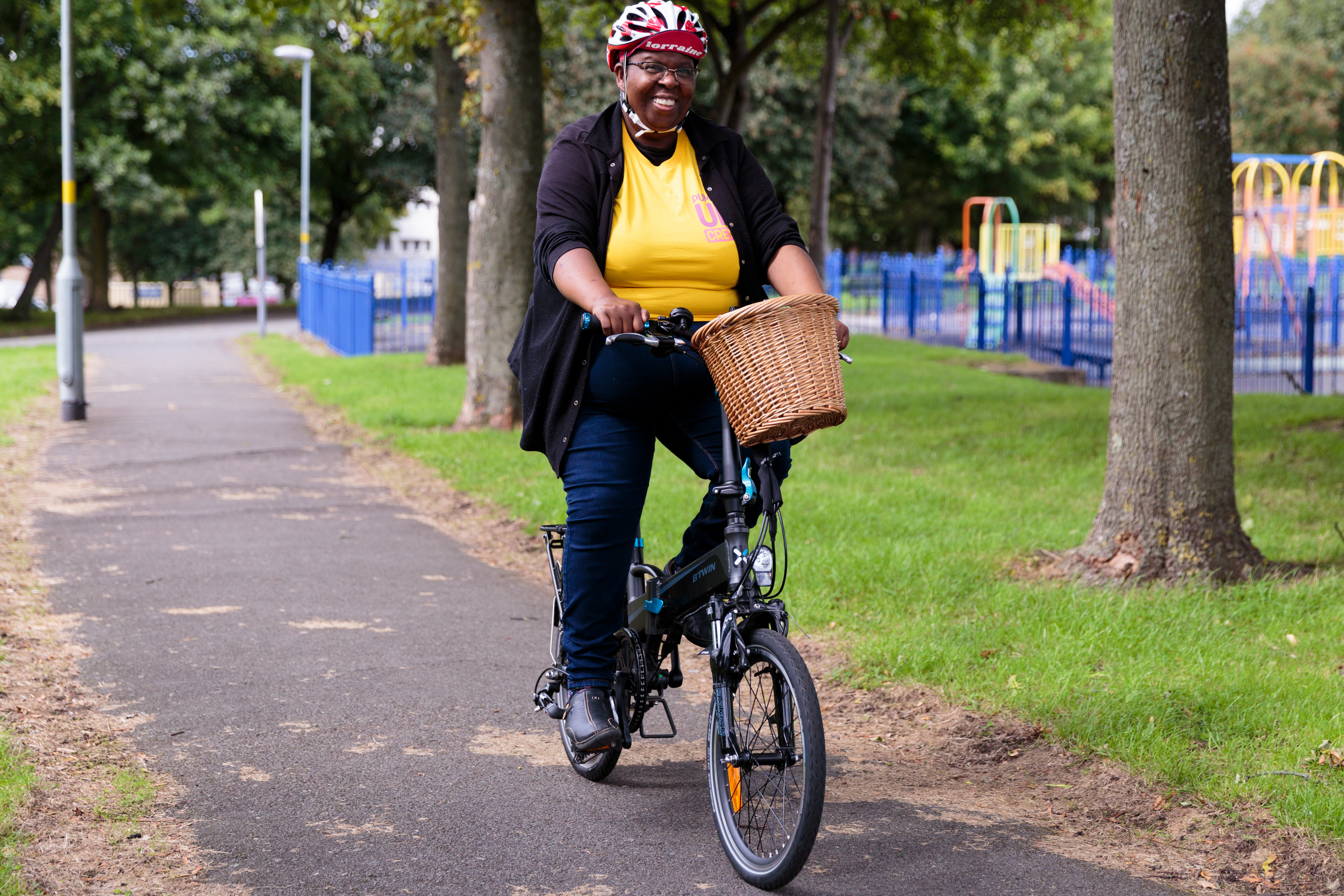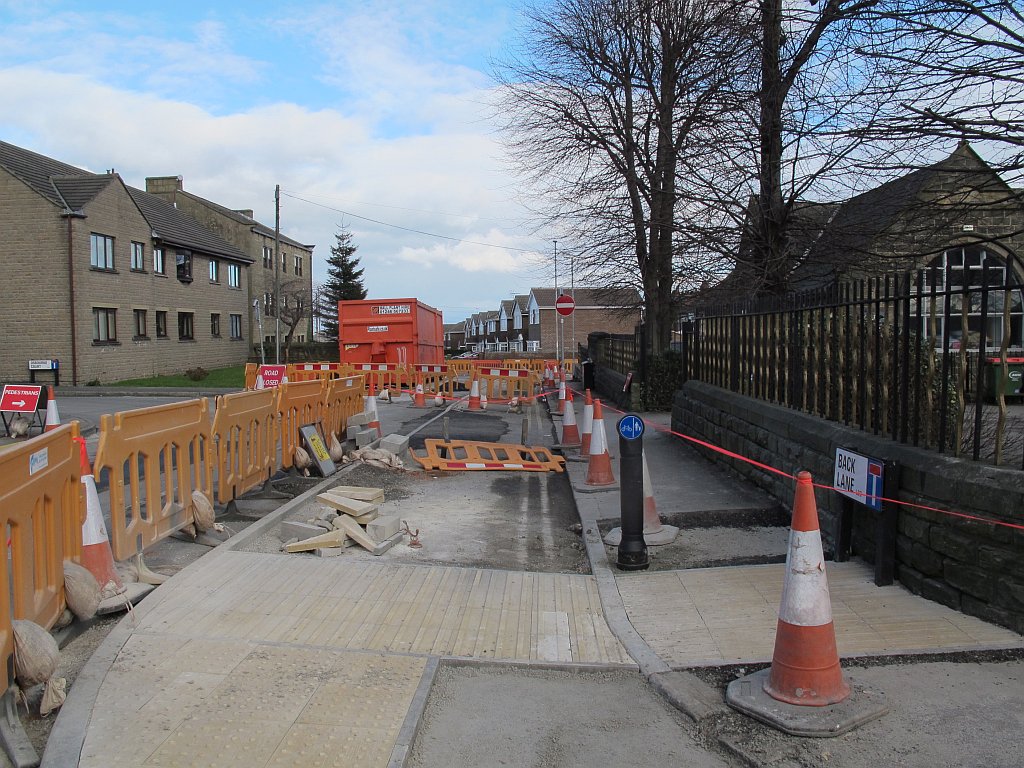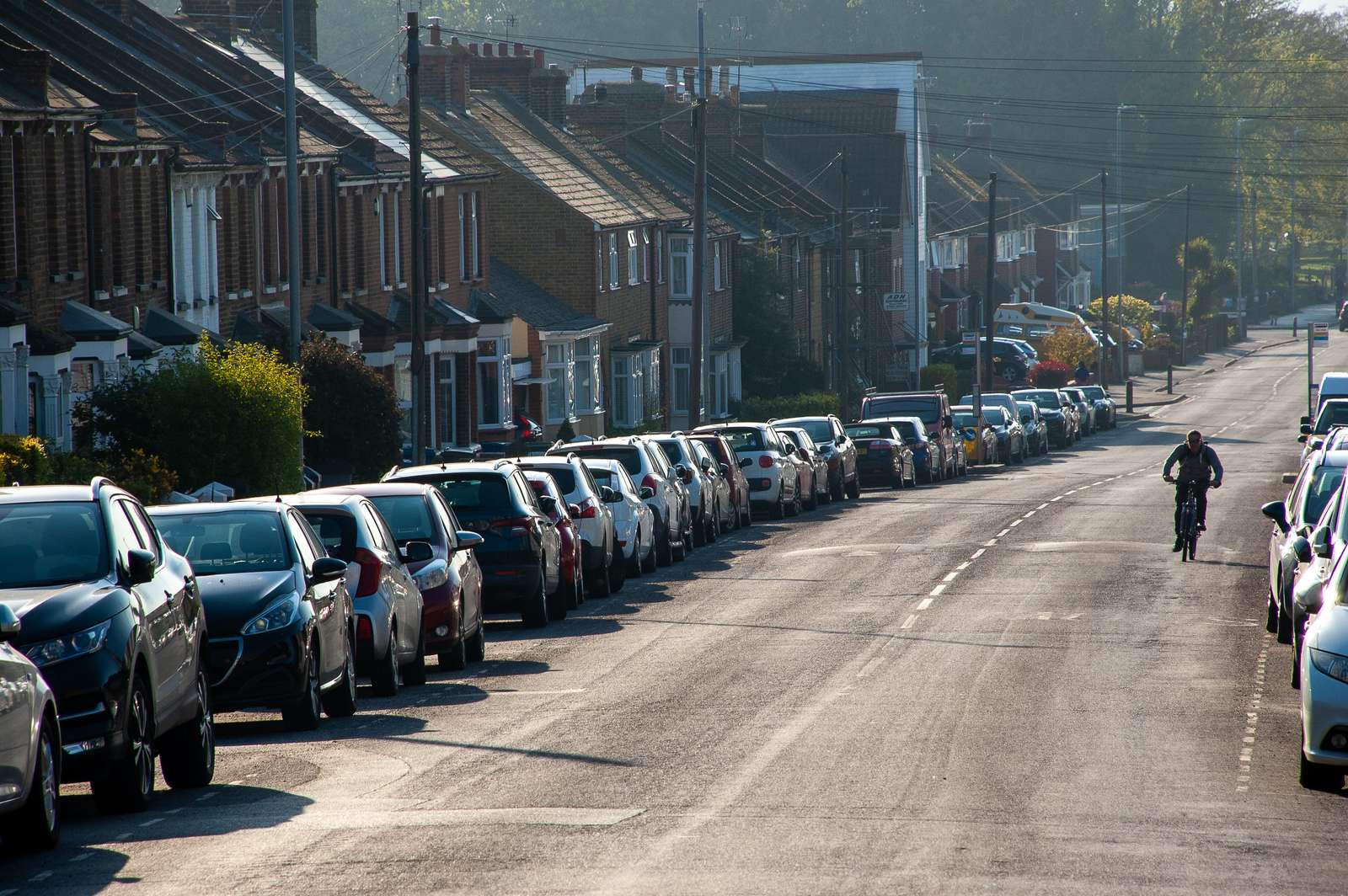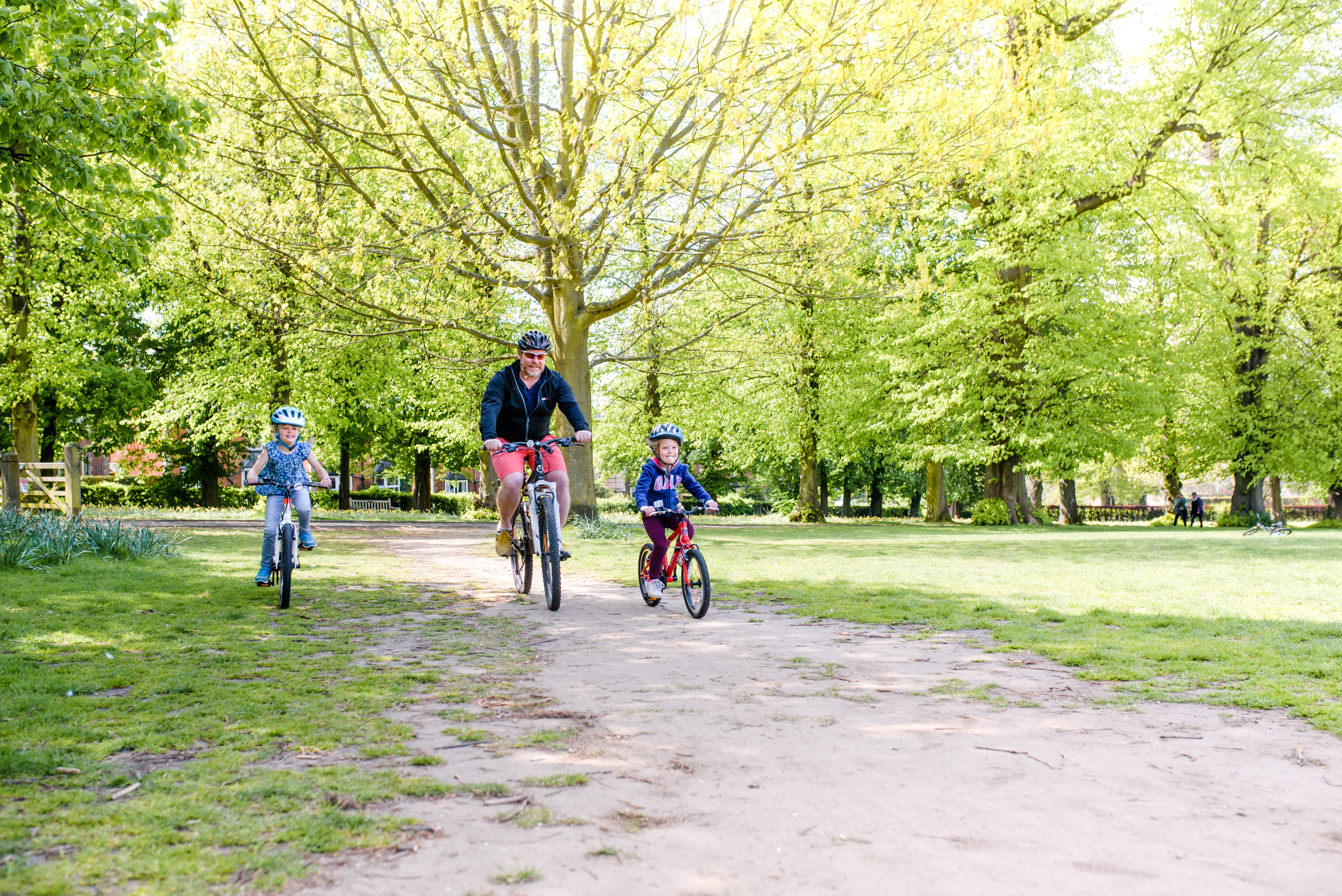Message to ministers: release the funding report and act on it
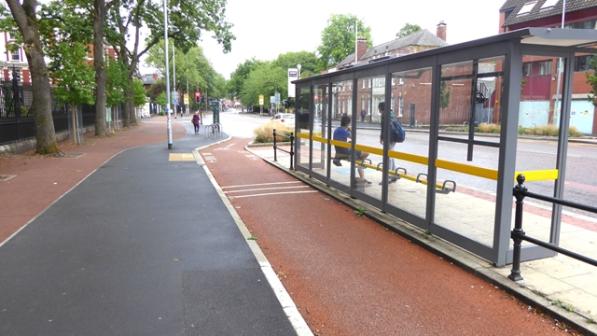
Fourteen months ago (in January 2020), I asked Mike Kane MP to table a parliamentary question about a report the government had commissioned, to assess what funding was needed to meet its targets to double cycling and increase walking by 2025.
These targets (or "aims", to use the government's preferred term), had been set in the government's first 'Cycling and Walking Investment Strategy' (CWIS1), published in April 2017. They were:
- To double cycling from 0.8 billion ‘stages’ in 2013 to 1.6 billion stages in 2025 (n.b. a cycling ‘stage’ is a trip or a part of a trip made by cycling, i.e. it would include a cycle ride to catch a train at a station);
- To increase walking activity to 300 stages per person per year in 2025 (this has turned out to be insufficiently ambitious, as our friends at walking charity Living Streets have shown);
- To increase the percentage of children aged 5 to 10 that usually walk to school from 49% in 2014 to 55% in 2025.
Now, you might think the Department for Transport (DfT) would have assessed how much investment was needed to meet these targets, before publishing them in a Cycling and Walking Investment Strategy. But hey: better late than never!
The report had been commissioned in 2018, from consultancy Transport for Quality of Life (TQL). The first public mention of it (for the cycling policy nerds among you!) was in footnote 38 on page 12 of the 'Call for evidence' for the DfT's Cycling and Walking Investment Strategy: safety review. This footnote briefly explained how TQL had modelled whether the government was on course to meet its targets (the answer was that it was only set to get a third of the way there). It then added that this "Research and evidence reports will be published in early 2019".
For various reasons (I won't bore you with the details), the research project unfortunately suffered delays, but by late 2019 I was told it was ready for publication, almost a year after its original due-date. Unfortunately, the Treasury didn't want this to happen - presumably because the research said that meeting the CWIS targets would require a lot more money than the Treasury was prepared to spend.
Questions, questions!
That's why I asked Mike Kane MP to table a parliamentary question (PQ) about when the report would be published. Alarmingly, the ministerial answer suggested (cryptically) that the DfT might only publish parts of the research, not the whole of it (as promised in our beloved footnote 38).
So I asked Ruth Cadbury MP to table a follow-up PQ, asking whether the Government would publish the research findings in full. The next ministerial answer, on 7 February, listed the documents that the DfT intended to publish (they were in fact published later that same day), but avoided admitting that the answer to Ruth's question was actually "No"!
I continued pressing for publication of the missing part of the research - named the 'Cycling Insights' report - both before and after we went into lockdown a few weeks later.
It was during this time that the government took some really positive steps to support cycling as a way for people to continue exercising, and for key workers and others to make essential journeys without depending on public transport.
On 9 May, transport secretary Grant Shapps announced £2bn for cycling and walking over the next five years.
This was then followed on 28 July by the Prime Minister's 'Gear Change' vision for cycling and walking, along with some new cycling infrastructure design guidance and the launch of the Highway Code review, that many of you will have responded to. All three were excellent documents.
£2bn for cycling and walking: a big advance, but still a long way to go
The announcement of £2bn of ringfenced funding for cycling and walking over five years (2020/1 to 2024/5) was also a significant milestone.
This was more than a six-fold increase compared with the £314m of ring-fenced funding announced for CWIS1 in 2017, covering the period 2016/17 to 2020/1 (yes, there is a one year overlap between these two five-year funding periods).
At an annual average of £400m per year, it is 80 times as much funding as the government allocated for cycling and walking in 2005, when it first set up Cycling England (a body which was then brutally disbanded in 2011).
Yet I also knew that it was still only a fraction of what was needed if the government was to meet its 2025 targets.
Although I still haven't seen the 'Cycling Insights' report (and I don't know for sure what its conclusions are), I understand that it proposes several different ways that the government could reach the target of doubling cycle use by 2025, with a wide range of costings.
The government has a long history of setting targets to increase cycling without providing the funding to support them
Roger Geffen, policy director
I believe the two scenarios that reached the targets most cost-effectively have price-tags of around £6bn to £8bn, in line with earlier findings from Sustrans.
These were not by any means the most expensive scenarios, however they did need to be backed by a wider package of traffic restraint (e.g. some form of road pricing). Most of the alternative scenarios, that lacked complementary traffic restraint measures, were a lot more costly.
The scenarios costing c£6bn and c£8bn sought to double cycling by targeting different population groups, and different parts of the country, and therefore resulted in different benefits. If the government just wanted to double cycling at minimal cost, it could concentrate £6bn of investment in areas with a health-conscious middle-class and/or student populations, which typically have a fairly strong cycling culture already.
However, that's not the scenario that yields the greatest benefits. This involves a bit more funding (£8bn), which should be targeted more towards older people, people with poorer health and other disadvantaged groups in 'left-behind towns', as well as more rural areas with higher levels of car-dependence (with some of the money being invested in boosting e-bike ownership and use).
This is clearly a more expensive way to double cycle use. However the health, climate and other benefits of those additional cycling trips are much greater, than if you mainly boost cycle use among people who already have good non-car options available and who are already pretty healthy.
Keeping up the pressure
So, with the government having committed £2bn to cycling and walking, but with a multi-year Spending Review then expected in late Autumn 2020, it was time to renew the pressure on the government to publish the 'Cycling Insights' report, to show that this £2bn, though helpful, was still only a fraction of what was needed to meet the government's targets.
So I got a third Parliamentary Question tabled in June, specifically asking when the 'Cycling Insights' report would be published. The ministerial answer told us that it had "been delayed by other pressures, but the Department intends to publish it shortly."
Two months later, it still hadn't appeared, so I submitted a Freedom of Information request for it. This was rejected on the grounds that it was still needed for "policy development" - which presumably meant that the government intended to use it to inform spending decisions on cycling and walking in the Autumn 2020 Spending Review.
Come the autumn though, the combination of Brexit uncertainty and the second wave of Covid had forced the Chancellor to abandon plans for a multi-year spending review.
So, instead of the "long term funding for cycling and walking" that had been promised in 'Gear Change', the government was only able to announce one more year's worth of funding, an allocation of just £257m for 2021/2.
The government really should have been scaling up local authorities' capacity to spend funding on cycling and walking (and spend it well, in accordance with the government's excellent new Cycling Infrastructure Design guidance), if it wanted to spend £2bn over five years - let alone the £6-8bn that it needs to spend to meet its targets.
Yet here they were, making a 15% cut, compared with the active travel budget of around £300m in 2020/1 (ministers had announced £250m of capital funding in May 2020, but there was also about £50m of revenue funding carried forward from an earlier announcement).
The Commons Transport Committee joins in the hunt
Last month, transport secretary Grant Shapps was asked to gave evidence to the Commons Transport Select Committee, covering all aspects of the DfT's activities. During that evidence session, committee member Lilian Greenwood MP asked a number of questions about 'active travel' (i.e. walking and cycling), most of which I had suggested to her.
She wanted to know whether the government had carried out research on whether its £2bn was sufficient to meet the government's 2025 cycling and walking targets. The answer should, of course, have been "yes"!
However Shapps started by saying that actually the government now had a new target, namely to increase cycling and walking to 50% of journeys in towns and cities by 2030.
This target had appeared in 'Gear Change', though neither we, our allies or the government had made a noise about it at the time - for reasons I'll return to in a moment.
Anyway, Lilian Greenwood therefore wanted to know whether this 2030 was an addition to, or a replacement for, the 2025 CWIS targets. Shapps evidently wasn't sure - he initially thought it was a replacement.
He then seems to have realised he might be wrong and backpedalled, though he also suggested that the £2bn was what had enabled the government to set a more ambitious target for 2030 (N.B. Ministers have since confirmed that the targets will run concurrently).
Ms Greenwood then reverted to her question about whether the £2bn was sufficient to meet the 2025 target, to which Shapps replied "That is right".
Then he hesitated again, presumably realising for a second time that he might be wrong (he was!). So he corrected himself, saying "I think I am right in saying—I am happy to write back with clarification—that it would put us on track both for the 2025 target that you mentioned and for the Prime Minister’s new cycling boost of half those journeys being cycled or walked by 2030 in towns and cities. We see the trajectory working for both of those purposes.”
Unfortunately, Shapps' subsequent letter to the Transport Committee neglects to answer Lilian Greenwood's initial question, about whether the government has researched the adequacy of its £2bn funding commitment.
Instead, it merely says the government "Believe[s] that the £2 billion investment ... will allow us to make strong progress against both targets". Well, that's not my understanding of that the DfT's own research says. I think we should be told!
I therefore seized an opportunity this morning to press directly for publication of the report. I was recently invited to give evidence to the Transport Committee, as part of an inquiry on post-covid transport recovery, alongside Mary Creagh (chief executive of Living Streets) and colleagues from the RAC and the Federation of Small Businesses.
In my evidence, I advised the committee that the research which Lilian Greenwood had asked Shapps about does exist; that it was completed at least 14 months ago; but the government has been sitting on it ever since, apparently at the Treasury's insistence. I therefore urged the committee join us in applying pressure on ministers to release it.
So what does the new 2030 target mean?
So what's the deal with that new 2030 target to increase cycling and walking to 50% of trips in towns and cities? The eminent transport expert Prof Phil Goodwin has written an excellent article, wondering why the cycling lobby has been so quiet about it.
He speculates that we don't believe the target is worthwhile unless backed by funding, but then argues that a better response would be to take the target at face value and work out what funding and other policy measures are needed to achieve it.
He is, of course, partly right about our scepticism. The government has a long history of setting targets to increase cycling without providing the funding to support them, going right back to the National Cycling Strategy in 1996.
This was launched with great fanfare, with its bold targets to double cycling by 2002 and then double it again by 2012.
Neither of these targets were remotely met, due to a complete lack of funding. Yes, central government funding for cycling for the next several years was precisely £0.00 - small wonder that it didn't work. In 1996, cycling accounted for less than 2% of trips in Britain. The figure has barely changed in 25 years.
However Prof Goodwin has overlooked another problem with the government's 2030 target. We don't know what percentage of trips in towns and cities is currently made by walking and cycling (i.e. we don't know what level we're starting from) - and nor does the government!
Prof Goodwin evidently thinks the current figure is about 30%, which is also what I'd have guessed. Yet DfT officials seem to think it's nearer 40%. By their own admission though, they are unsure how to even measure this target.
That makes it very difficult to do what Prof Goodwin has urged us to do, namely to take this target seriously!
Without knowing how big a change in cycling and walking is needed to meet it, we cannot say what funding is required to do so.
Nor can we work out (for instance) what contribution it would make to the government's forthcoming Transport Decarbonisation Plan (n.b. this too has been delayed - it's probably won't now appear till at least May, having originally been due out last November). This target isn't just grossly underfunded - as things stand, we don't even know what it means!
I've previously argued that a sensible Transport Decarbonisation Plan would involve deciding how much motor vehicle mileage is needed for the transport sector to deliver its fair share of the government's 'net-zero' emissions target to decarbonise the economy by 2050, and thus setting targets for the required reductions in motor traffic.
The next step would be to work out which motor-vehicle miles are most easily switchable to walking or cycling, to public or shared transport, or to not travelling at all, in order to meet these traffic reduction targets; and hence to set corresponding targets for increased use of each of these alternative options.
Finally, it would involve reallocating transport funding in order to meet these targets, backed with a package of road pricing or similar measures to reduce demand for motorised traffic, with the proceeds being invested in improving these sustainable alternatives. Lo and behold, this would result in a genuine transport strategy!
But I'm getting way ahead of myself - I guess we'd better just take things one step at a time...
I hope the Transport Committee will join Cycling UK in pressing the government to release that report into the funding to meet its current cycling and walking targets - and to act on the report's conclusions when the Chancellor carries out his Spending Review later this year.
If that leads the government to set transport budgets that are in line not just with its cycling and walking targets, but also its targets for transport decarbonisation and other wider policy objectives, we might finally achieve that first doubling of cycling, roughly 30 years after this target was first set!



